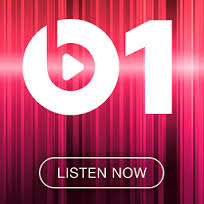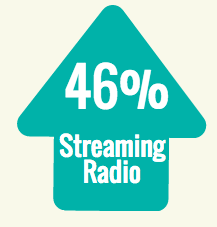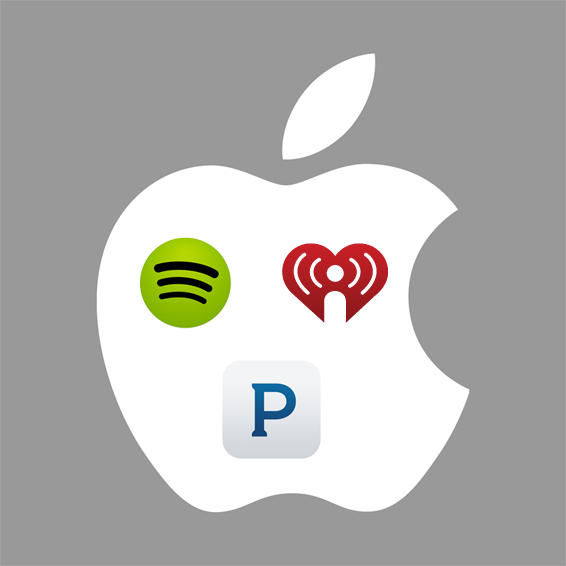 Apple Music launched this morning with an ad-supported listening service. Yes, there is the subscription service as well. It was described at length during the service’s introduction in early June. By contrast, Apple executives took great pains to avoid referring to advertising. Of course, they never said there wouldn’t be ads. They just didn’t mention it, so the media assumed the company was walking away from the 21-month ad-supported iTunes Radio experiment.
Apple Music launched this morning with an ad-supported listening service. Yes, there is the subscription service as well. It was described at length during the service’s introduction in early June. By contrast, Apple executives took great pains to avoid referring to advertising. Of course, they never said there wouldn’t be ads. They just didn’t mention it, so the media assumed the company was walking away from the 21-month ad-supported iTunes Radio experiment.
As word trickled out that the Beats 1 service would have sponsored listening with live reads by DJs, there again was the carefully scripted absence of the word “advertising.” Of course, a live DJ read that promotes a product is, by definition, an advertisement. It’s just a specific type of ad format that you can call a sponsorship. Over the weekend, an Ad Age article also reported that, “In addition to Beats 1, Apple Music will include the free, ad-supported, Pandora-like streaming radio service.” So iTunes Radio and ad-supported listening lives on inside of Apple Music.
Why is Apple Not Talking About, but Maintaining its Ad-Supported Service?
 Apple Music’s pre-launch hype focused primarily on content and subscriptions. The Beats 1 radio service and the Connect artist pages were promoted as new and differentiated content. Subscriptions were the new way to access everything. That makes sense. Apple executives wanted to promote the new stuff. Subscriptions are new for them and ad-supported listening is not. This is the simple answer for why they weren’t talking about advertising.
Apple Music’s pre-launch hype focused primarily on content and subscriptions. The Beats 1 radio service and the Connect artist pages were promoted as new and differentiated content. Subscriptions were the new way to access everything. That makes sense. Apple executives wanted to promote the new stuff. Subscriptions are new for them and ad-supported listening is not. This is the simple answer for why they weren’t talking about advertising.
The more complex answer is to avoid the crossfire of music labels and a few outspoken artists that are crusading against ad-supported listening as somehow unfair. Of course, no one seems to explain how the ad-supported broadcast radio and Youtube are unfair, but that inconsistency doesn’t seem to bother the protagonists. Either way, Apple wanted to avoid the arrows and focus more on its positioning as the friend of the music labels. This also explains why it capitulated so quickly to Taylor Swift’s complaints.
Why Apple is maintaining the ad-supported listening experience is more obvious.
- Apple already has ad-supported iTunes Radio listeners. There is no reason to abandon them.
- Advertising defrays the cost of royalties.
- The most successful music streaming subscription service has clearly articulated that ad-supported listening is critical to the successful growth of its subscriber base. If you want one data point to support your strategy on how to build a new subscription audio streaming service, this is a good place to start. If you would like another data point, simply consult Google Play Music’s move to offer ad-supported listening after two years of subscription-only listening.
- Market research firms such as Strategy Analytics forecast that no more than 11% of streaming audio consumers will choose subscriptions. As a result, ad-supported listening will command 89% of the worldwide audience. There was no need for Apple to forsake that much potential reach and customer insight.
Advertisers Want to Be on Internet Radio
 There are also many data points that demonstrate advertisers want to reach that 89% of all music streaming service listeners. One example is how advertisers have spent their money over the past year. Standard Media Index reports that Internet radio ad revenue in May 2015 increased 44% over the previous year. Looking ahead, a Strata survey of media buyers showed a 46% increase in interest levels over 2014 for using streaming radio as part of 2015 advertising strategies.
There are also many data points that demonstrate advertisers want to reach that 89% of all music streaming service listeners. One example is how advertisers have spent their money over the past year. Standard Media Index reports that Internet radio ad revenue in May 2015 increased 44% over the previous year. Looking ahead, a Strata survey of media buyers showed a 46% increase in interest levels over 2014 for using streaming radio as part of 2015 advertising strategies.
Similarly, we recorded a sharp rise in the number of advertisers in Internet radio in the Q2 2015 Internet Radio Ad Load Report. All of these trends confirm the interest of advertisers in the audience. Publisher and analyst data confirm the interest of consumers in ad-supported, “free” listening.
Replicating Spotify, Pandora and iHeart All in One Package… with Ads
 When Apple launched iTunes Radio in September 2013, it was all about advertising. There was no subscription option. The buzz was that it would be a Pandora killer due to its distribution power, as RAIN News pointed out in a recent editorial.
When Apple launched iTunes Radio in September 2013, it was all about advertising. There was no subscription option. The buzz was that it would be a Pandora killer due to its distribution power, as RAIN News pointed out in a recent editorial.
The iTunes Radio target appeared to be the ad-supported Pandora, which held the largest U.S. Internet radio audience by a large margin. Fast-forward 21 months and the new target appears to be Spotify, the owner of the largest streaming music subscription audience. Sprinkle a little of the iHeart Radio magic of live DJs in the form of Beats 1 and you have the new Apple Music. It is worth noting that those services comprise the top three U.S. music streamers according to Triton Digital’s Top 20 Ranker. Each has a different user experience focus but they all have one thing in common, advertising.
Subscription streaming is a great service for those consumers willing and able to shell out $120 annually. The point here is that music labels can denigrate ad-supported listening until the cows come home and it will still be the dominant form of streaming consumption and over half of all revenue for the industry. Apple clearly recognizes that fact.
We won’t know for some time if Apple Music will succeed or even how the company is defining success. However, one thing you can expect to complement the well-promoted subscription service is an ad-supported listening experience. Its presence is good for consumers, good for Apple and good for the music industry.
Related Posts
What Wasn’t Said at the Apple Music Debut
Apple Accepts the Worst Deal in Music Streaming – thanks to Taylor Swift
Apple Music’s Biggest Threat May Be to Broadcast Radio
